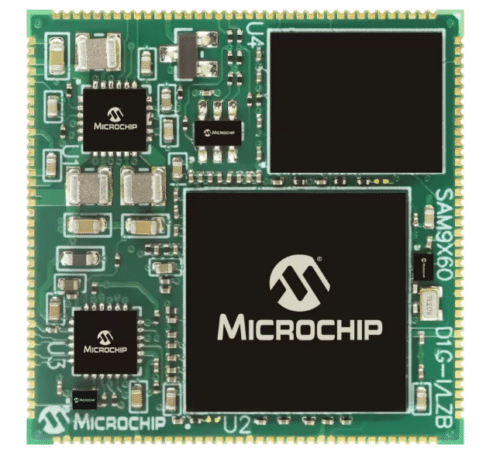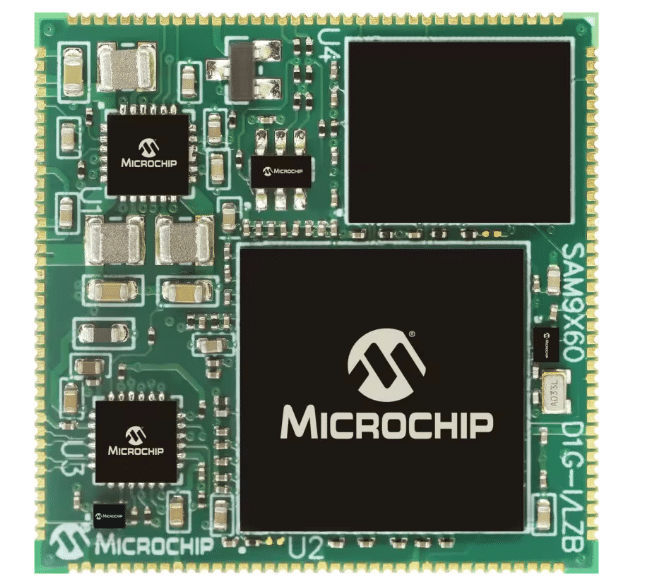[ad_1]
The design has a tiny computer chip running fast, with memory, internet connection, and power control, made to fit easily and save money.

A System-On-Module (SOM) is attached to a motherboard like other Surface-Mount Technology (SMT) components using a Pick & Place machine. The Pick & Place machine selects SMT components based on their centre of gravity, as defined by the CAD placement file. However, applying this method to a SOM could be more reliable during assembly.
The SAM9X60-SOM is a System-on-Module (SOM) reference design from Microchip that features the high-performance, low-power SAM9X60D1G SiP embedded microprocessor (MPU) based on the ARM926EJ-S CPU, running at 600MHz. The compact, single-sided, hand-solderable PCB includes the SiP MPU, 4 Gbit SLC NAND Flash, a KSZ8081 10/100 Ethernet PHY, and the MCP16501 Power Management IC, optimised for the module’s needs. The SOM leverages proven Microchip components to expedite time-to-market by easing hardware design and software development. It simplifies the design of the main application board, reducing PCB complexity and cost.
The enhanced user interface capability includes various features to improve connectivity and security. It offers a single 10/100 Ethernet, dual CAN, and dual SD Card/eMMC for storage and networking. Additionally, there is a 2Kb Serial EEPROM with EUI-48 Node Identity for unique identification.
For communication, it includes two high-speed USB hosts plus one high-speed host or device, along with thirteen FLEXCOMs for flexible communication options. The user interface is supported by a 24-bit LCD controller with overlays up to 1024×768 resolution, a 2D Graphics Engine, and a Camera Interface for visual display and interaction.
Audio features include a built-in Class D Amplifier for sound output. Security is enhanced with a Hardware Encryption Engine, True Random Generator (TRNG), Secure Boot with on-chip Secure Key Storage, and physical protection against tampering with 8 tamper detection pins.
Additional security measures include on-the-fly scrambling/unscrambling for memories and up to 6 Tamper Pins. Software support includes a free mainline Linux Distribution, Ensemble Graphics Toolkit (EGT) for Linux graphics development, MPLAB X Integrated Development Environment, MPLAB Harmony v3, and Harmony Graphics Suite for RTOS graphics development. There is also support for multiple third-party software.
The module is compact at 28mm x 28mm, has 152 pins, and is castellation hand-solderable for easy integration into various applications.
Microchip has tested this reference design. It comes with a bill of materials (BOM), schematics, etc. You can find additional data about the reference design on the company’s website. To read more about this reference design, click here.
Source link



